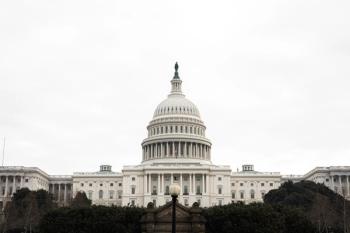
Maternity care deserts: 1 in 3 counties have no obstetric services
Millions of women live in areas with no access or limited access to maternity care because of the closure of hospitals or obstetric care units, the March of Dimes says.
Millions of American women are living in “maternity care deserts,” and the number of areas without obstetric providers is growing, according to a new report by the March of Dimes.
More than one-third of the nation’s counties (36%) qualify as maternity care deserts because they don’t have hospitals offering obstetrics care and have no obstetric providers, according to the March of Dimes report released this week. The number of counties qualifying as maternity care deserts has increased by 2% since the March of Dimes compiled a similar report in 2020.
The rise in these maternity deserts is driven by the closure of hospital maternity care units and the loss of providers in these areas. The loss of obstetric services in hospitals and obstetric providers led to decreases in maternity care in over 110 counties since the 2020 report.
Access to maternity care is particularly difficult for women in minority groups and those living in rural areas, the report found.
“With an average of two women dying every day from complications of pregnancy and childbirth and two babies dying every hour, our country is facing a unique and critical moment as the infant and maternal health crisis continues intensifying,” Stacey D. Stewart, March of Dimes president and CEO, said in a statement.
“With hospital closures, inflation and COVID-19 limiting access to care, the compounding issues of our time are bearing down on families, forcing them to extend themselves in new ways to find the care they need and ways to afford it,” she said.
About 2.2 million women who are of childbearing age live in these maternity care deserts, and more than 146,000 babies are born in those counties. Nearly seven million women live in areas with no access or limited access to obstetric services, and one out of eight babies are born in those areas.
Researchers have found evidence of
Before the pandemic, the maternal mortality rate during delivery hospitalization was 5.17 per 100 000 pregnant patients. During the pandemic, the maternal mortality rate rose to 8.69 per 100,000 pregnant patients.
President Biden’s administration has focused on maternal morbidity and mortality.
The closure of rural hospitals is adding to the problems of access to maternity care, according to the March of Dimes report.
The report also found one in six Black babies were born in areas with no limited access to maternity care, while one in four Native American babies were born in areas with little or no obstetric care.
Federally Qualified Health Centers can also play a role in addressing the growing number of areas without obstetric care, the March of Dimes says. However, they are typically more common in urban areas, the report noted.
The American College of Obstetricians and Gynecologists has pushed for extending Medicaid benefits for all postpartum patients from 60 days to one year to reduce the number of maternal deaths. More than half of the states have done that, but health groups say that should be happening nationwide.
To address these maternity care deserts March of Dimes said it is launching a “Mamagenda for #BlanketChange” to spur lawmakers, advocates and families to develop solutions to protect mothers and babies.
March of Dimes produced the report with Reckitt. Go

















































